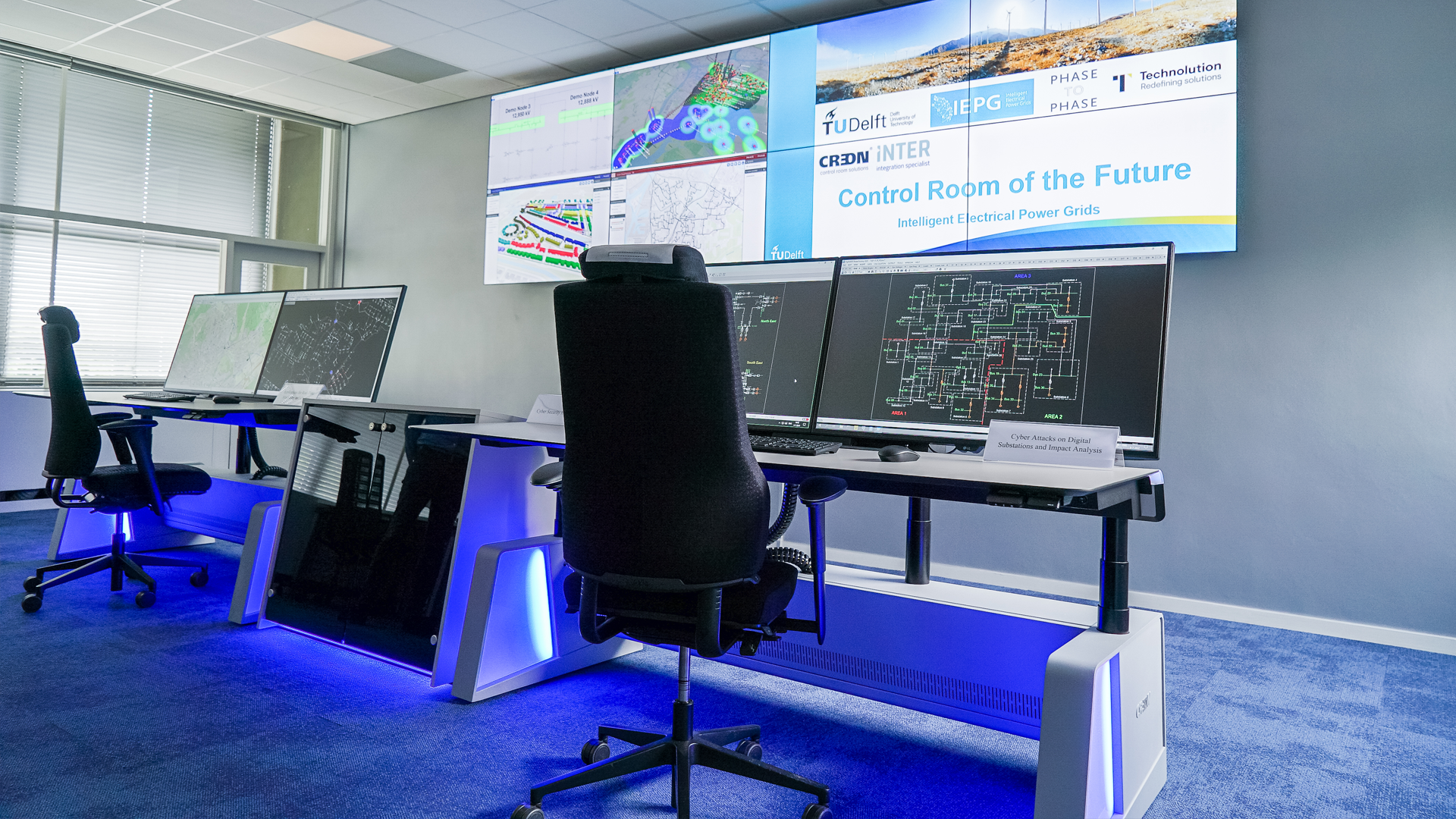The demand for sustainable energy is growing. This growing demand may cause problems for our energy network. What risks are we facing? Is our network resilient to cyber threats? Imagine the consequences if something were to go wrong. At TU Delft, the power grid is being made digitally resilient in the ‘control room of the future’. In this unique living lab, new energy management technologies are being researched, developed and tested in the smart electricity network.
Cybersecurity in the control room
The Control Room of the Future (CRoF) is working on an intelligent, resilient and cyber-secure power grid. This requires a lot of research, including research into cybersecurity. In addition, experiments are being conducted to improve the power grid.
“In our control room, we want to simulate the control rooms of power plants. In other words, we simulate the power grid in real time, which allows us to recreate exactly the same infrastructure as in the control room of a real power company,” says Alex Stevanov, associate professor of Intelligent Electric Power Grids and director of the Control Room of the Future technology centre. Using a digital twin of the Dutch electricity network, all kinds of scenarios can be tested.
Control room of the future
AV specialist INTER was called in to realise the TU Delft control room. They chose Barco OpSpace combined wit the TITAN workstations from CREON. These compact workstations are ideal to combine with large monitors on which the user can arrange his own work environment and work task-oriented within a one pixel-space. This allows users to create their own efficient and well-organised workspace from various sources.
Unique test environment
Usually, control rooms are highly secured and it is not possible to experiment. Control Room of the Future is bringing about a change. The control room in Delft features operational technologies, such as data acquisition, control and monitoring systems. The supercomputer can simulate the physical infrastructure of the power grid, such as wind turbines, power lines and substations.
“We can now investigate much more than before,” explains Remko Koorneef. He is Technician Intelligent Electric Energy Networks at TU Delft. “We can watch in the control room of power companies, but we cannot go there and turn the knobs to test or investigate things. Because in such a critical environment, everything is live.”




